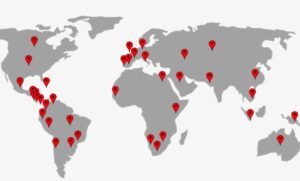Food Security and nutrition were major drivers of cultural evolution by enabling sociotypic development and communal living after the Neolithic agricultural revolution. The sociotype is a construct, uniting concepts from the sciences and the humanities, which, together with the genotype, determines an individual’s phenotype (behavior) and, collectively, advances societal culture. The sociotype, ever-changing during life, has three domains – Individual, Relationships, Context. Nutrition interacts with each to ensure, respectively, the dimensions of food security – (1) utilization (metabolic fuel); (2) accessibility (socializing influences); and (3) availability (right to nutritious food).
The sociotype operates through multiple pathways, including diet-gene interactions, allostasis, microbiota, oxytocin, and culturally through mate selection, family bonds, social communication, political ideologies and values.
Food security, sociotypes and culture form a complex adaptive system to enable coping with life circumstances in health and disease, and to achieve sustainable development, eradicating hunger. Challenges remain in implementing this paradigm for society.
ds. No references allowed. Abstracts may be submitted at a later date.

- Society

Membership
Support our mission by becoming a member

Public Health Policy Center
Explore the society's public health initiatives

Meet the community
See what our members have been working on
- Journal
- Author Center
- Membership